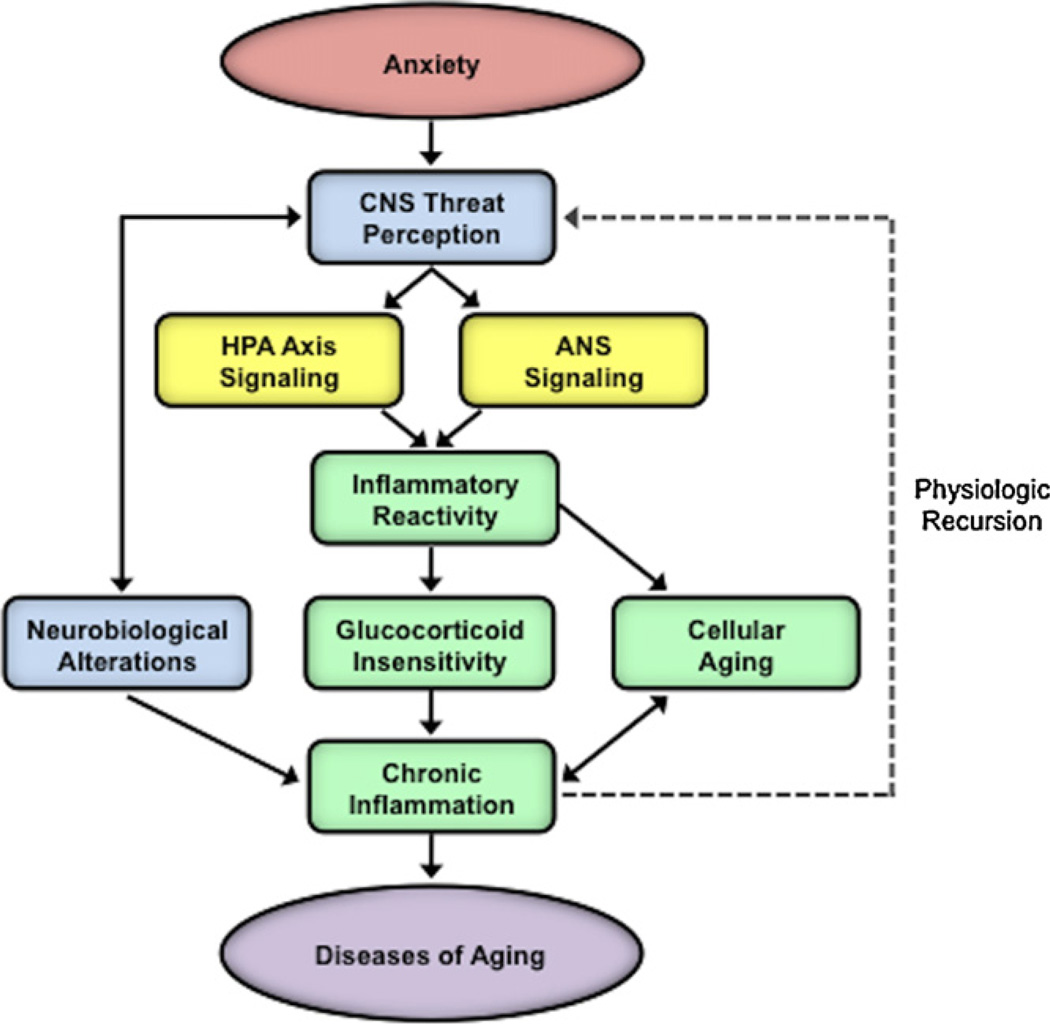Fig. 4.
Integrative neurobiological model showing the pathways mediating anxiety-related increased risk for diseases of aging. The model depicts how exaggerated neurobiological sensitivity to threat in anxious individuals leads to cognitive-behavioral threat responses characterized by a pattern of vigilance-avoidance, which ultimately results in sustained threat perception. Such sustained threat perception is accompanied by prolonged activation of threat-related neural circuitry and threat-responsive biological systems including the hypothalamic-pituitary-adrenal (HPA) axis, autonomic nervous system (ANS), and inflammatory response, ultimately leading to elevated inflammation. Over time, the effects on central and peripheral systems may become chronic through structural changes in the central nervous system (CNS), altered sensitivity of receptors on immune cells, and accelerated cellular aging. Finally, such chronic elevations in inflammation can increase risk for, and accelerate the progression of, diseases of aging.

